#mogao caves
Text

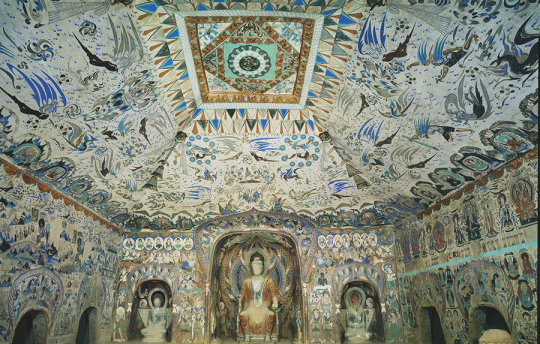
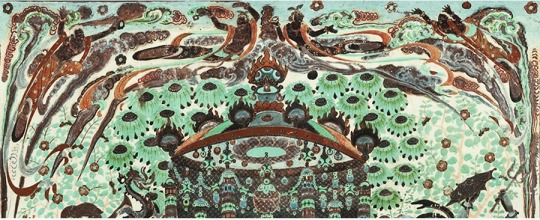



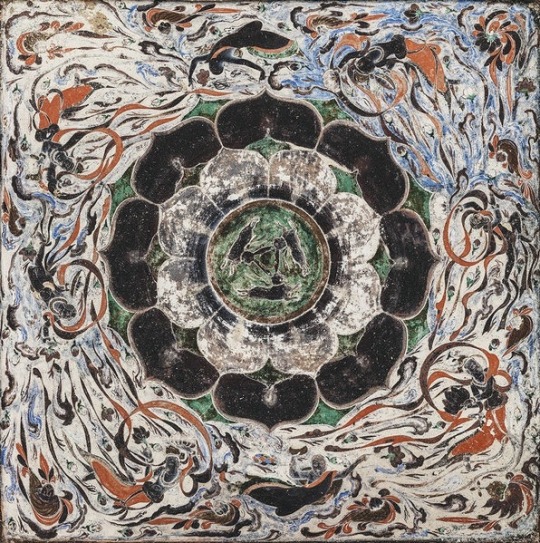
Incredible art from the Northern Wei Dynasty, Mogao Caves, 4th century
My brief experience seeing Wei Dynasty art in North China taught me it's some of the most refined in Chinese history
[Photo/Chinaculture.org]
582 notes
·
View notes
Text




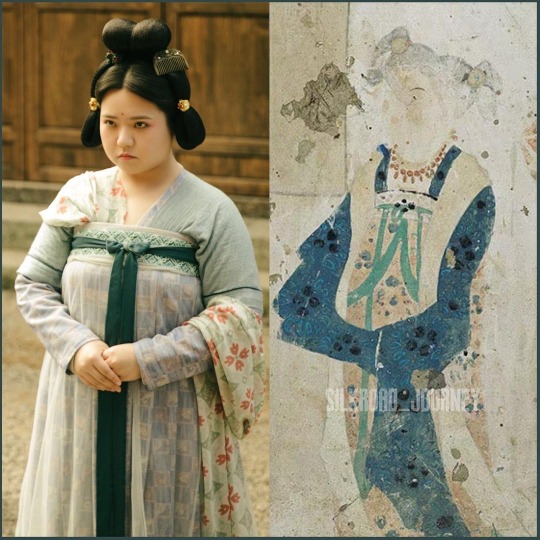

Tang dynasty period drama (Luoyang 风起洛阳) 2021
Vast majority of the C-drama costumes are restored based on real Tang dynasty paintings from the Mogao Caves. These are some examples.
Photos credit: silkroad_journey on Instagram.
#chinese history#chinese culture#hanfu#tang dynasty#Buddhism#mogao caves#China#silk road#ancient china#Medieval China#chinese drama#cdrama#hanfu recreation#Hanfu restoration#dynastic china#art
225 notes
·
View notes
Text
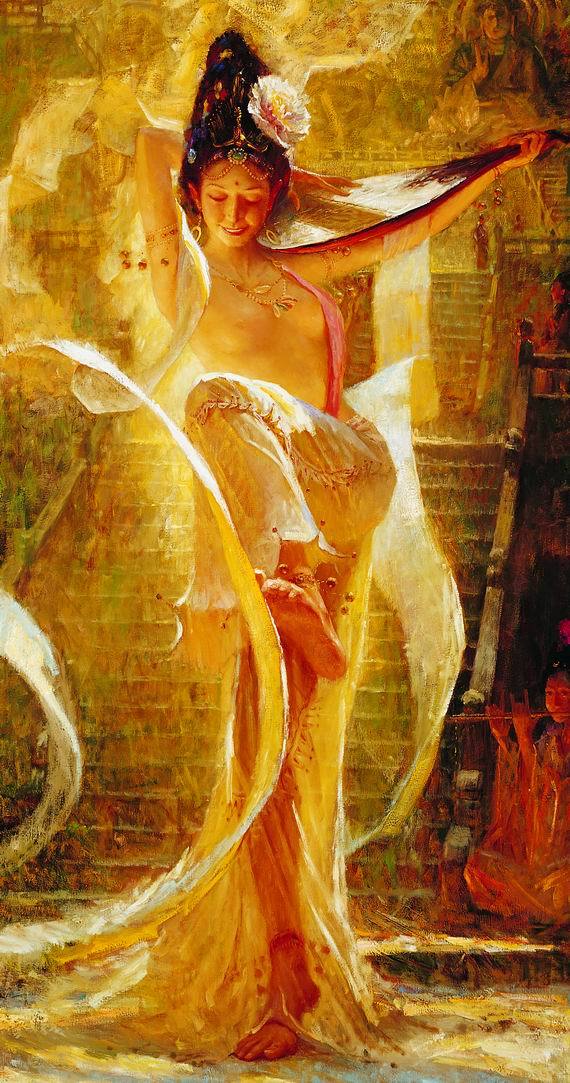





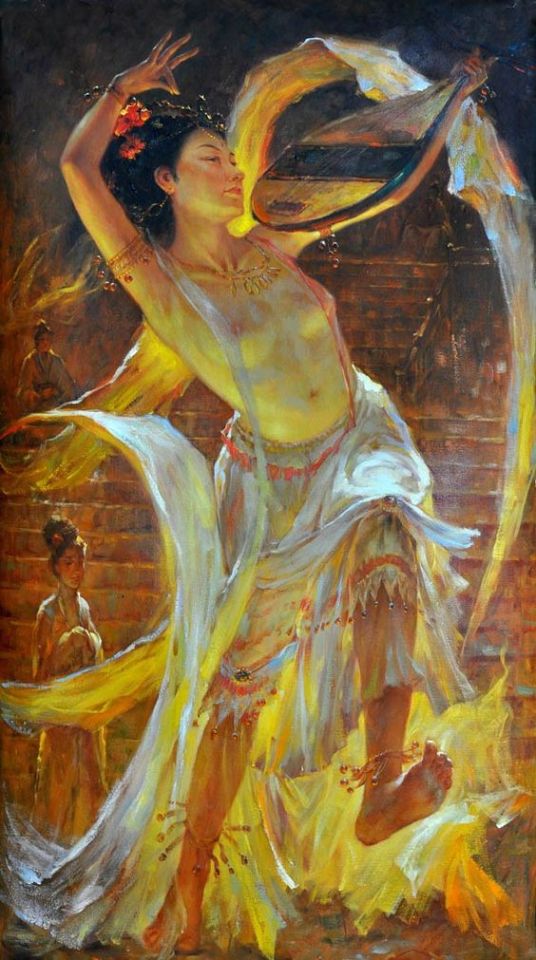


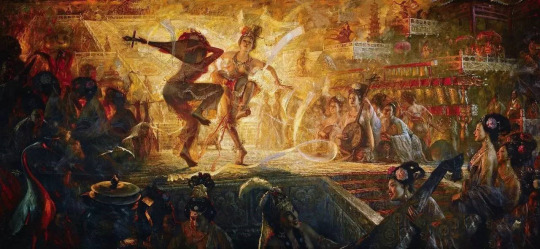


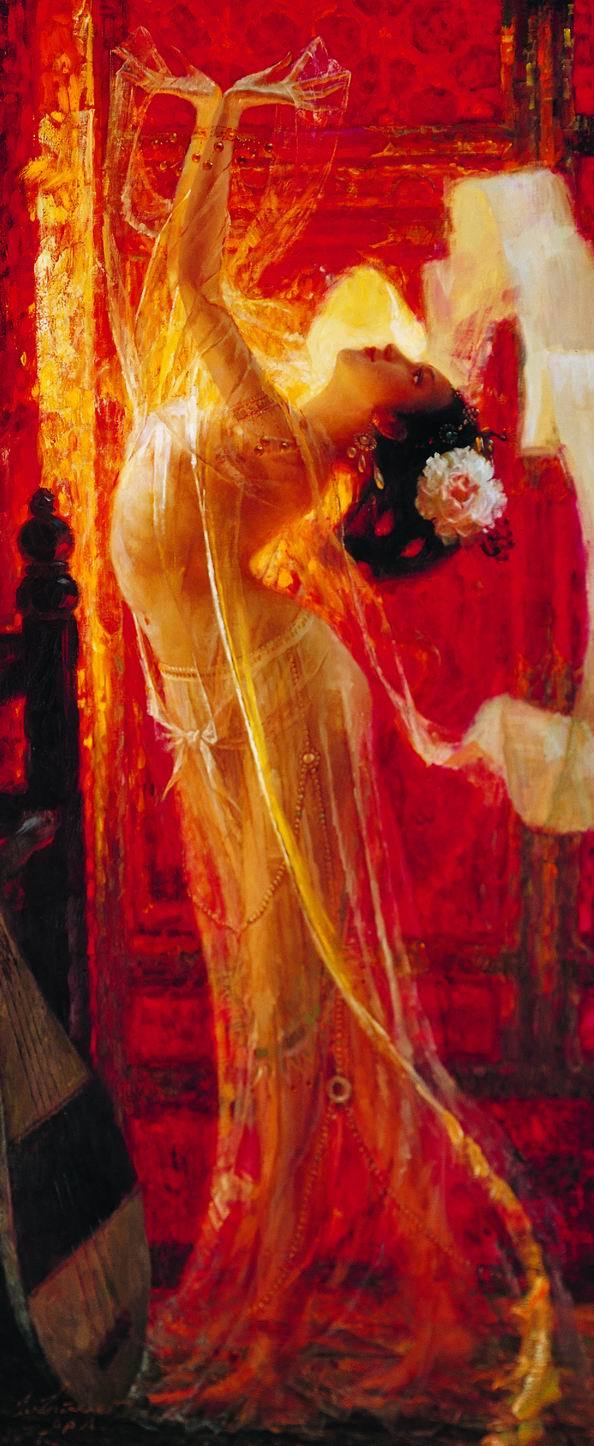
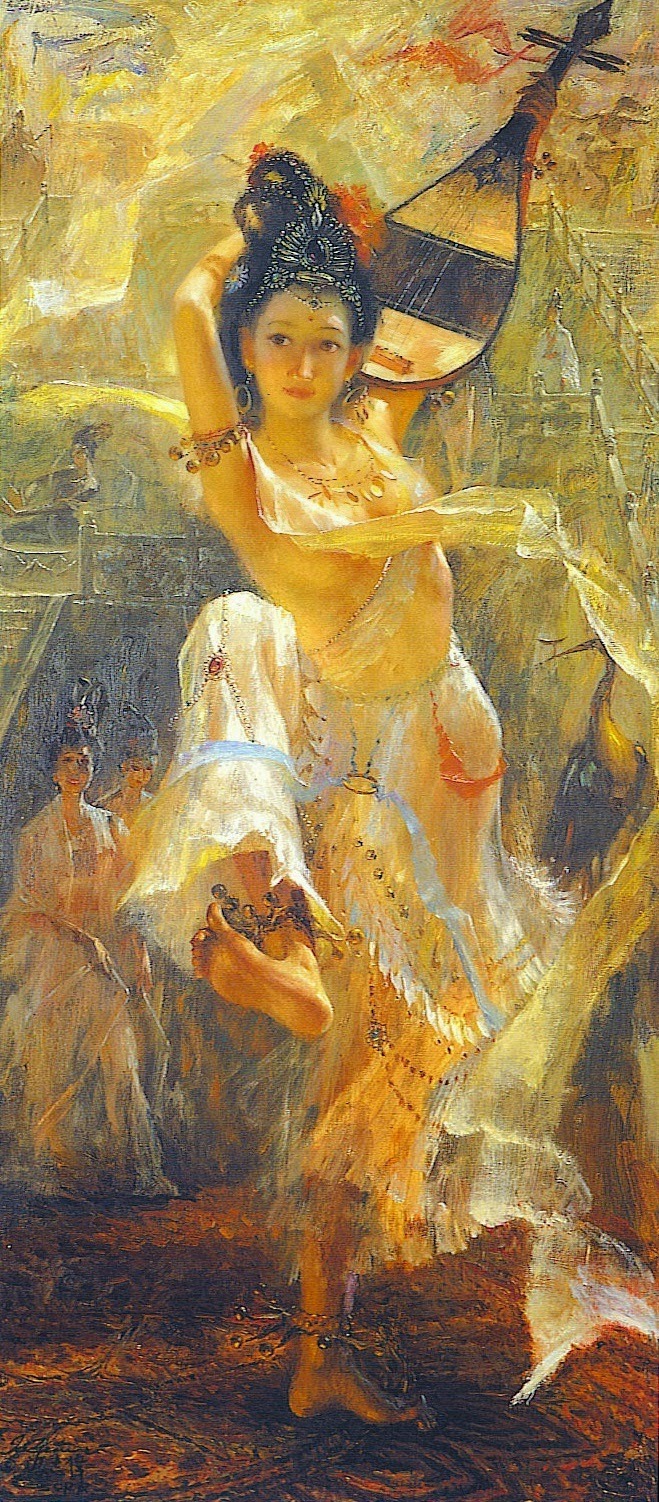


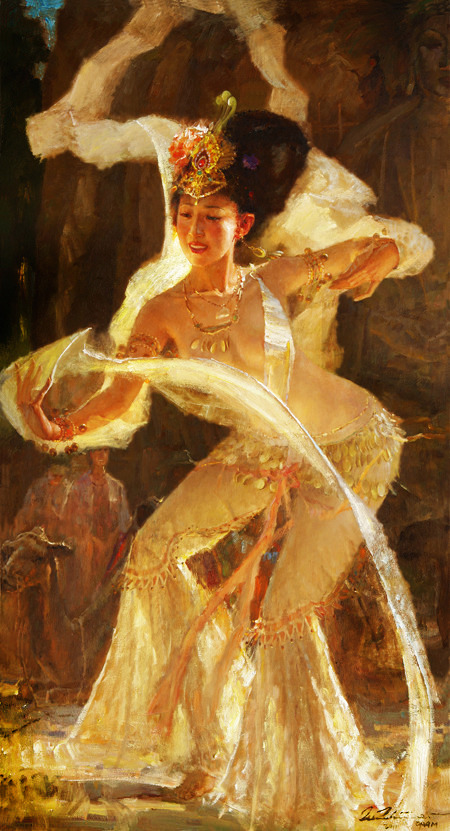


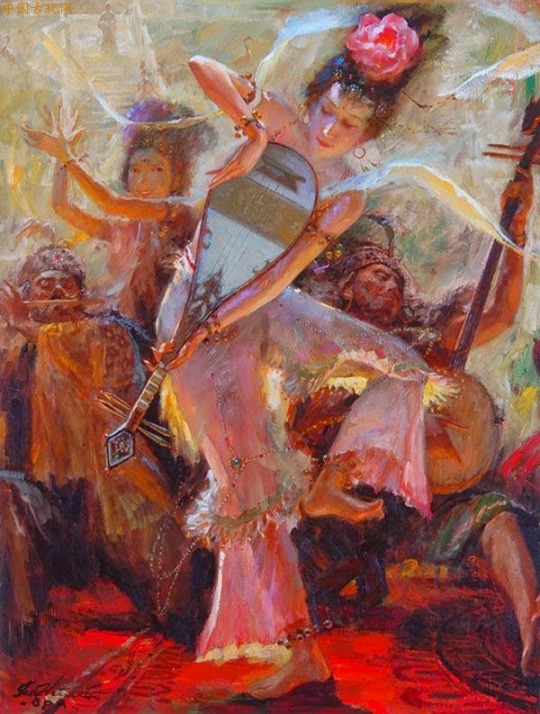




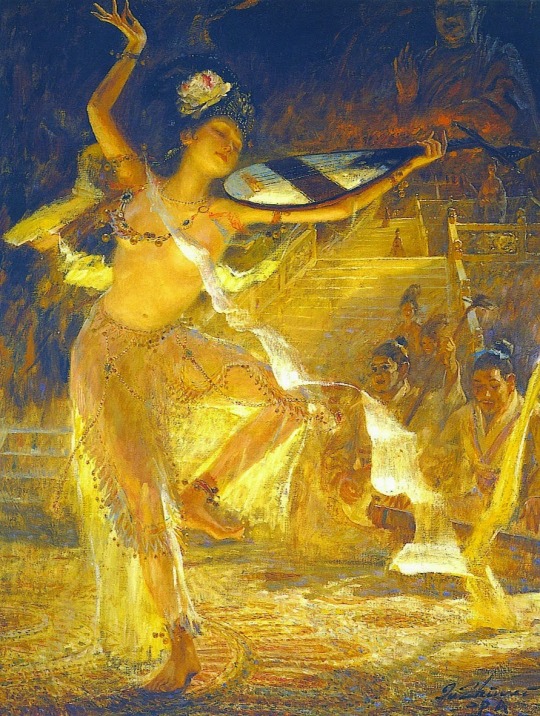




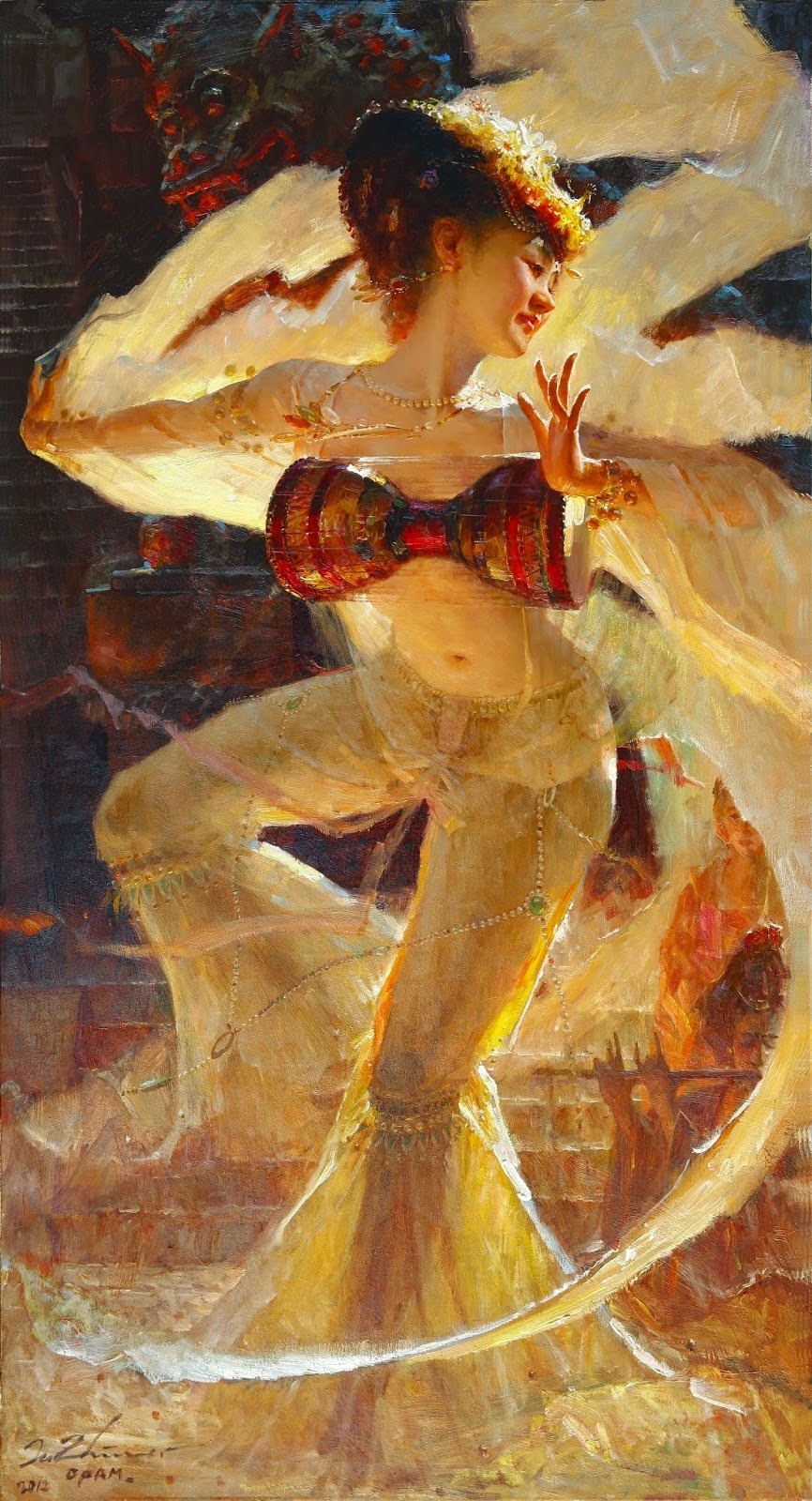
Joyful dance series, aka Buddhist dancers at Dunhuang, by Zhiwei Tu. More pics on my blog, link at bottom.
I believe these were generally based on Tang Dynasty images from the Mogao Caves at Dunhuang. All the ones I saw were labeled as paintings by Zhiwei Tu. Many of them are doing Sogdian style musical/dance performances, which became popular in China during the Tang era:
"The Sogdian Whirl and other similar, imported dances were popular in China during the Tang dynasty, especially in Chang'an and Luoyang.
The Sogdian merchant-dancers, who performed different dances but were especially renowned for this dance, were very famed in China. In the Sogdian Whirl, a young woman was spinning inside a circle. The Sogdian Whirl became popular in China. It was performed both in the Chinese court and in China itself. Sources from the Tang dynasty such as the Old Book of Tang attest to it being performed at court. The dance was performed at court by, among others, the Emperor Xuanzong of Tang and Yang Guifei.
The Sogdian Whirl was depicted in the funerary art of Sogdians in China. Further, it was depicted on many native Chinese tombs, which further shows its popularity in China."
-taken from Wikipedia
#history#ancient history#art#art history#dance history#asian art#paintings#ancient china#chinese#china#mogao caves#art detail#dance#dancers
71 notes
·
View notes
Text
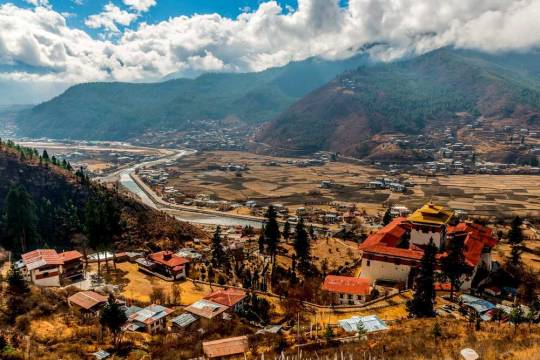
Paro
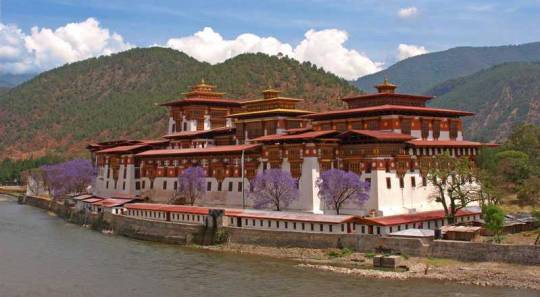
Punakha

Trongsa
#travelers#wanderlust#destinations#black panther#whosawgod#mogao caves#parola#bhutan#bhutan tour package#bhutan travel
19 notes
·
View notes
Photo
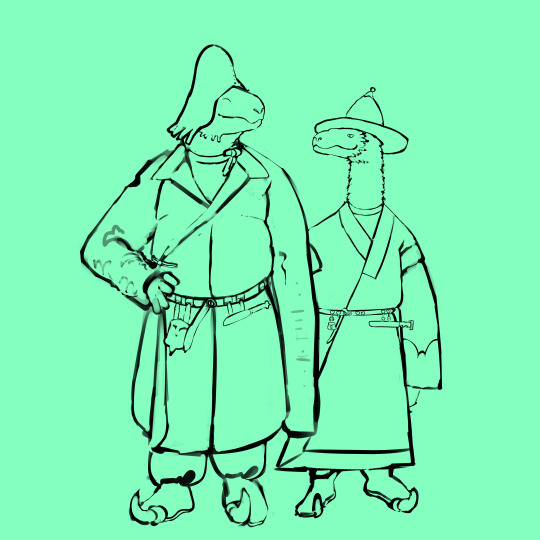
boyfriends
#my art#gonna colour this laterrrrr I got uni now#furry#costume inspirations:#tibetan empire period art#xiongu#afraysiab#mogao caves#kushan#termez#khazar
20 notes
·
View notes
Text
Monk-Priest

#digital art#digital illustration#oc#my art#dunhuang cave paintings#dunhuang#mogao caves#buddhist art#chinese art
3 notes
·
View notes
Text



Creative teapot, inspired by the desert background and stone Buddha statues. It's strong, simple, and profound.
4 notes
·
View notes
Photo
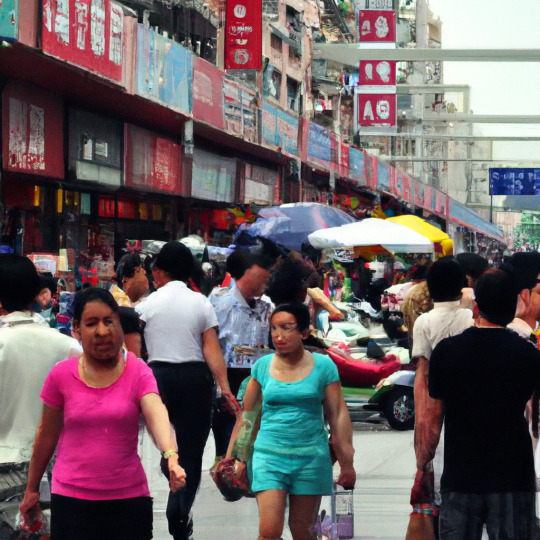
The unbearable heat and humidity are quickly causing the ancient heritage sites in China to crumble and decay. This is a great tragedy, as these sites are a part of our shared global history and must be preserved. The government is aware of the situation and is working hard to combat the elements, but it is a difficult battle. The people of China are saddened by the sight of these beautiful structures succumbing to the weather, but we must remember that they are still standing and that is something to be grateful for.
#environment#gansu#mogao caves#li zhao#rainwater#sites along the silk road#chinese painting#dunhuang#greenpeace#fault
0 notes
Photo


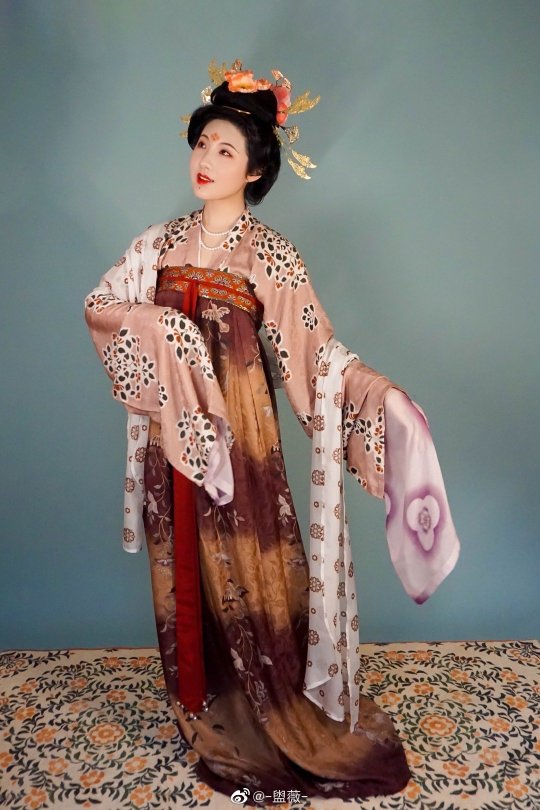






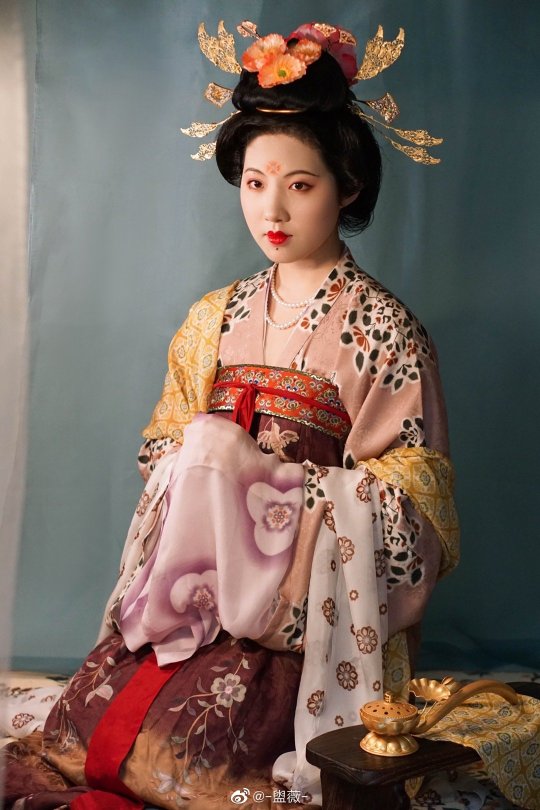
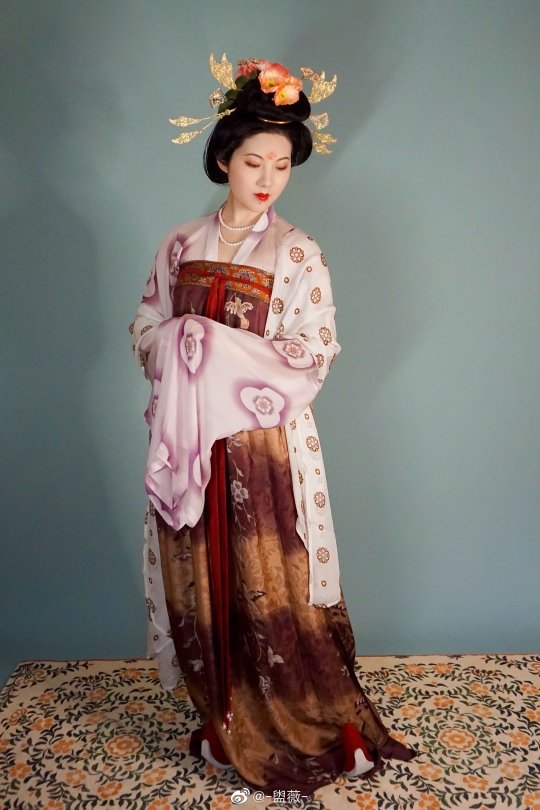

【Historical Artifacts Reference】
Skirt Pattern Reference:Tang Dynasty Murals<Mother and Daughter Doner>in Cave 12 of Dunhuang Mogao Grottoes.
※Due to the mural paint has long been oxidized, resulting in color differences※
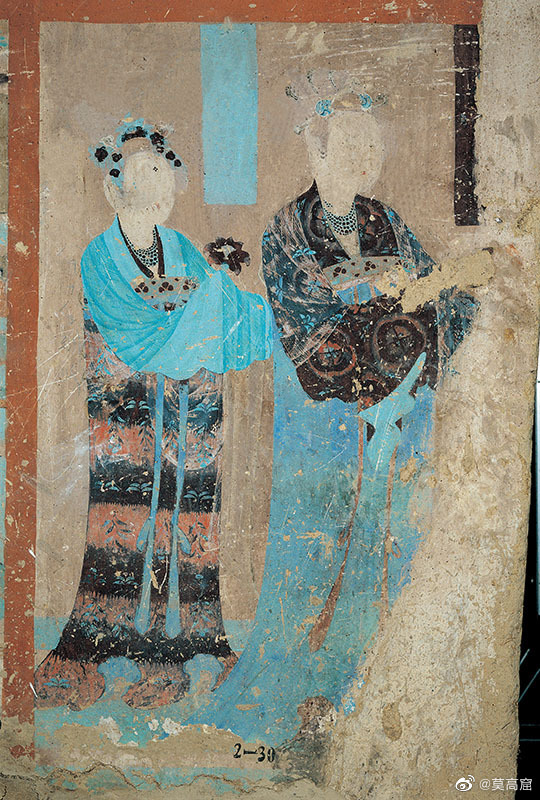
【Skirt Restoriation And Way Of Wearing Reference】
※Let the inner skirt show through the side※
China Five Dynasties and Ten Kingdoms Period:Murals From Tomb of Wang Chuzhi王處直(862–922)
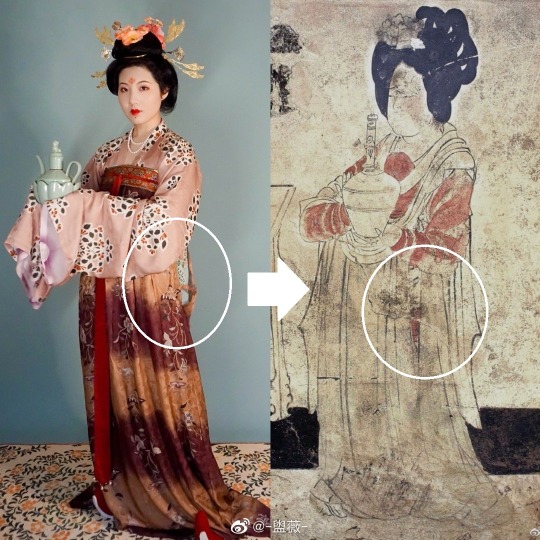
China Tang Dynasty Murals in Cave 159 of Dunhuang Mogao Grottoes.


【Tang Dynasty Hairpin Artifacts】


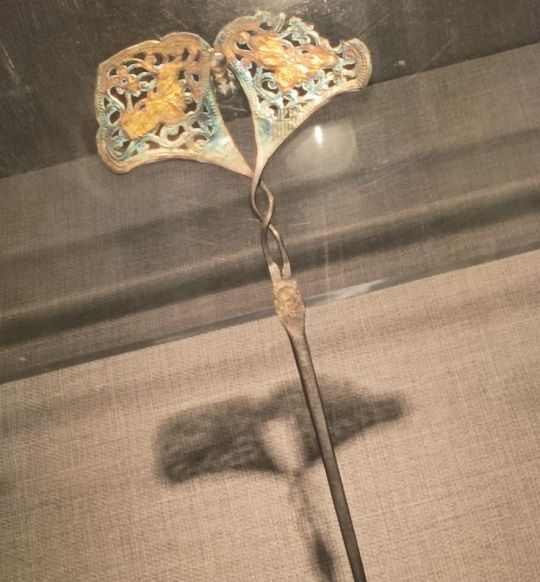


[Hanfu · 漢服]Chinese Tang Dynasty(618-907A.D)Traditional Clothing Refer to Tang Dynasty Dunhuang Mogao Grottoes Murals
Mid-Late Tang Dynasty Women's Attire
————————
📸Recreation Work:@-盥薇-
👗 Hanfu: @时合岁初传统服饰
🔗Weibo:https://weibo.com/3942003133/MC5n4viSt
————————
#Chinese Hanfu#Tang Dynasty(618-907A.D)#hanfu#chinese traditional clothing#chinese history#Mid-Late Tang Dynasty Period#hanfu history#chinese fashion history#ruqun#齊胸衫裙 qixiong shanqun#pibo 披帛#Chinese Culture#china#chinese#Huadian(花钿)#hanfu accessories#hanfu artifacts#Dunhuang Mogao Grottoes Cave#漢服#汉服#recreation#-盥薇-#时合岁初传统服饰#Tang Dynasty Hairpin Unearthed from the tomb of Wu King Wife Tomb#tang dynasty hairpin
230 notes
·
View notes
Text
1900-Discovers the Dunhuang manuscripts


The Taoist monk Wang Yuanlu discovers the Dunhuang manuscripts, a cache of ancient texts that are of great historical and religious significance, in the Mogao Caves of Dunhuang, China.

The majority of surviving Dunhuang manuscripts were kept in a cave, the so-called Library Cave (Cave 17), which had been walled off sometime early in the 11th century. The documents in the cave were discovered by the Daoist monk Wang Yuanlu, who was interested in restoring the Mogao Caves, on June 25, 1900.

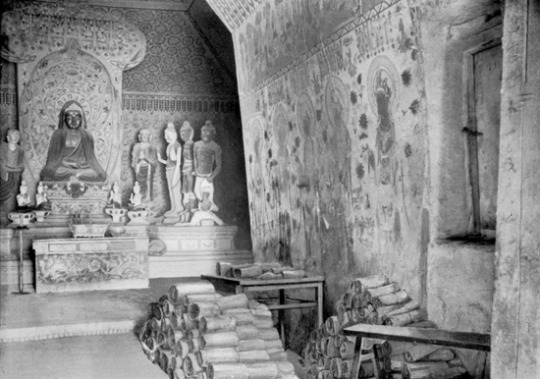
The majority of surviving Dunhuang manuscripts were kept in a cave, the so-called Library Cave (Cave 17), which had been walled off sometime early in the 11th century. The documents in the cave were discovered by the Daoist monk Wang Yuanlu, who was interested in restoring the Mogao Caves, on June 25, 1900.[4] In the next few years, Wang took some manuscripts to show to various officials who expressed varying level of interest, but in 1904 Wang re-sealed the cave following an order by the governor of Gansu concerned about the cost of transporting these documents. From 1907 onwards, Wang began to sell them to Western explorers, notably Aurel Stein and Paul Pelliot.
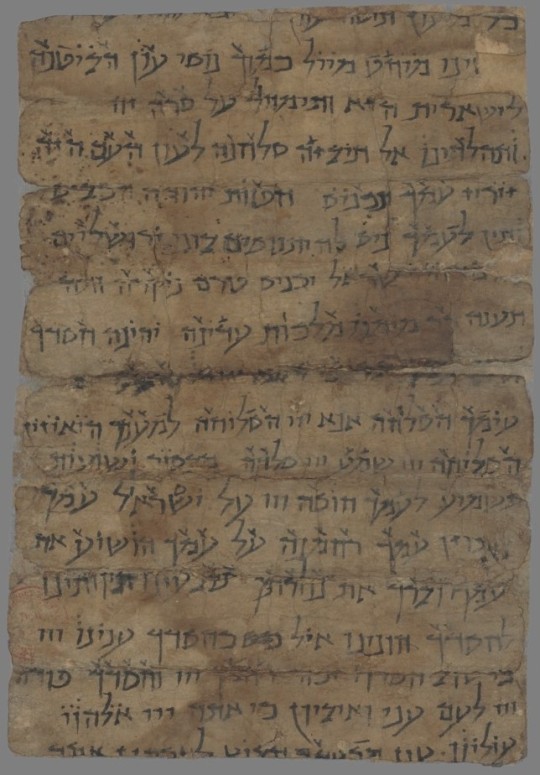


In addition to the manuscripts that he acquired from Wang, Pelliot also uncovered a large number of manuscripts and printed texts from Caves 464 and 465 (Pelliot's Caves 181 and 182) in the northern section of the site. These documents date to the Yuan dynasty (1271–1368), and are written in various languages, including Chinese, Tibetan, and Old Uyghur. Scholars in Beijing were alerted to the significance of the manuscripts after seeing samples of the documents in Pelliot's possession. Due to the efforts of the scholar and antiquarian Luo Zhenyu, most of the remaining Chinese manuscripts were taken to Beijing in 1910 and are now in the National Library of China. Several thousands of folios of Tibetan manuscripts were left in Dunhuang and are now located in several museums and libraries in the region.



2 notes
·
View notes
Text

painting from a mogao cave temple at dunhuang, northwestern china.
283 notes
·
View notes
Text

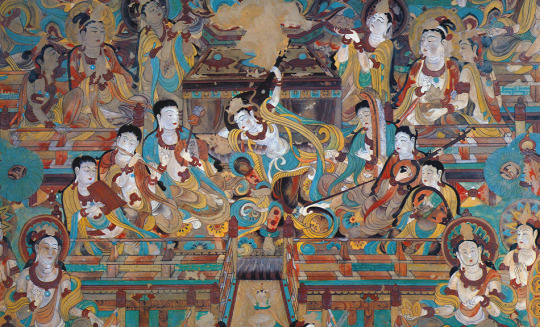
Chinese woman in Sogdian dancing style, the Jiyuetu from Mogao Cave 112, 8th C. CE. Mogao (Dunhuang) Cave 112 painting, left. Statue based on painting, unknown date, right.
#art history#art#ancient history#tang dynasty#ancient china#chinese#statue#sculpture#mogao caves#sogdiana#paintings#dance history
32 notes
·
View notes
Text
True worship can end the cycle of birth and death.
Take refuge in Spiritual leader Saint Rampal Ji Maharaj to attain salvation, eternal peace and happiness.

#black panther#wakanda forever#black tumblr#nepalese#wanderlust#mogao caves#bhutan tour package#bhutan travel#myanmar to import russian oil#maldives#myanmar#bhutan#santrampaljimaharaj#godkabir#muslim#hindu
3 notes
·
View notes
Text
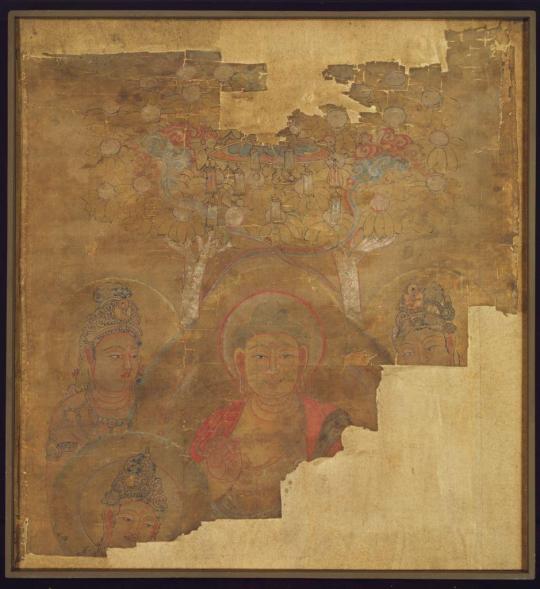
Unknown, Fragment of a painting of the Pure Land of the Buddha Amitabha
Tang Dynasty
700-750 from Mogao Caves, Dunhuang, Gansu Province
China
Very damaged silk. Several interpretations can be made of these figures: The Buddha Sakyamuni teaching the Law under the tree, or the Buddha Amitabha in his Pure Land, with Avalokitesvara and Mahasthamaprapta. However this last bodhisattva is recognizable
102 notes
·
View notes
Text
Manjusri Bodhisattva

3 notes
·
View notes
Text

Legends of the humanoids
Reptilian humanoids (4)
Five Dragon Kings – the Five Coloured Dragons with Directions in ancient Chinese belief
Historically there arose a cult of the Five Dragon Kings in Chinese legend based on Wuxing (5 elements, Nature Philosophy on Taoist cosmology). The name Wufang longwang ( "Dragon Kings of the Five Regions/Directions") is registered in Taoist scripture from the Tang dynasty, found in the Dunhuang caves, also be known as the Magao caves.
Incorporating elements of traditional Chinese beliefs, the Five Elements, it associates the Five Dragon Kings and the five coloured dragons with the five directions. In the east, there is the Blue Dragon God King, who has 49 Dragon Kings under his command, who control 70 myriad myllion small dragons, mountain spirits and sundry charms. The document states that it is the work of the small dragons and spirits under the control of the Dragon King that cause poison and disease to people, and that they should pray to the Dragon King who oversees them for healing. The Red Dragon God King is located in the south, the White Dragon God, the White Dragon God King in the west, the Black Dragon God King in the north and the Yellow Dragon God King in the centre, each with a considerable number of Dragon Kings, countless small dragons and charmed demons.
The Azure Dragon or Blue-Green Dragon (Qīnglóng), or Green Dragon (Cānglóng), is the Dragon God of the east, and of the essence of spring. The Red Dragon (Chìlóng or Zhūlóng, literally "Cinnabar Dragon", "Vermilion Dragon") is the Dragon God of the south and of the essence of summer. The White Dragon (Báilóng) is the Dragon God of the west and the essence of autumn. The Yellow Dragon (Huánglóng) is the Dragon God of the center, associated with late summer. The Black Dragon (Hēilóng), also called "Dark Dragon" or "Mysterious Dragon" (Xuánlóng), is the Dragon God of the north and the essence of winter.
[Image bottom: One of the Buddha statues in Mogao Caves, China]

伝説のヒューマノイドたち
ヒト型爬虫類 (4)
五方龍王 〜 古代中国の信仰における五方位に結びつく五色の龍王
歴史上、中国の伝説には五行(5つの要素) に基づいた「五方龍王信仰」があった。敦煌石 (莫高窟) で発見された唐代の道教経典には、「五方龍王」という名前が記されている。
中国の伝統的な信仰の要素である五行 (道教の宇宙論に基づく自然哲学) を取り入れ、五龍王と五色の龍を五つの方角と関連付けている。東方には青龍神王がおり、配下に49の龍王をしたがえ、それらが70万億の小龍や山精・雜魅を従えている。この文書の趣旨は、四方八方どこにでも、人間を毒や病に侵す龍王の手先がいて、彼らの主である龍王に救済を祈り求めなければならないということだ。南方には赤龍神王、西方には白龍神王、北方には黒龍神王、中央には黄龍神王がおり、同様にそれぞれ相当数の龍王、無数の小龍、魅鬼などが配置される。
蒼龍または蒼緑龍(靑龍)、または緑龍(蒼龍)は、東の龍神であり、春の本質を表す。赤龍(辰砂龍 または 朱龍)は南の龍神で、夏の神である。白龍は西の龍神であり、秋の神である。黄龍(黃龍)は中央の龍神で、晩夏に関連している。黒龍(黑龍)は「暗龍」または「神秘龍(玄龍)」とも呼ばれ、北の龍神であり、冬の精髄である。
#humanoids#legendary creatures#hybrids#hybrid beasts#cryptids#therianthropy#legend#mythology#folklore#s.f.#nature#art#taoism#yin yang#chinese mythology#taoist cosmology#wuxing#5 dragon kings
118 notes
·
View notes